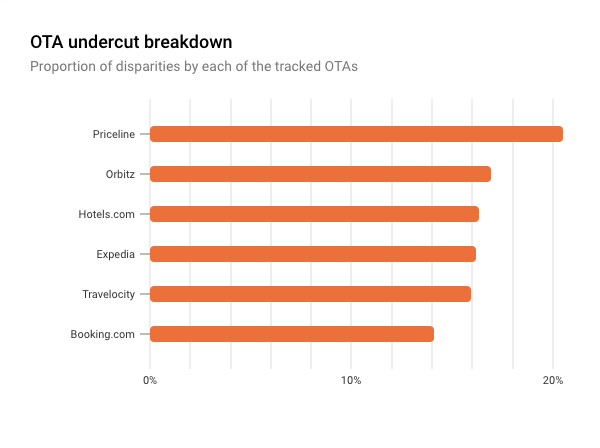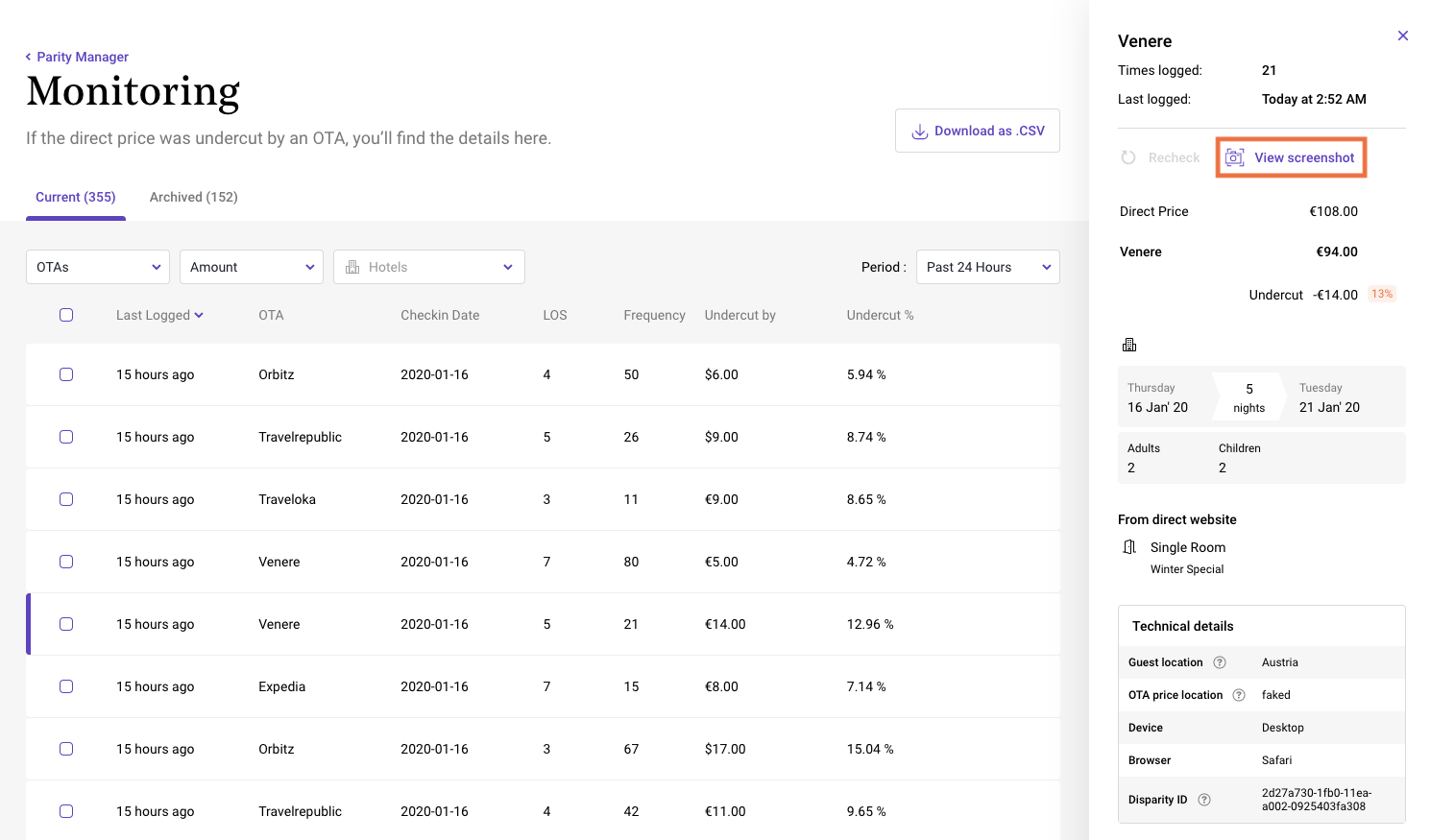
You’re almost definitely aware of the huge opportunity created for hotels during Black Friday and Cyber Monday.
NB: This is an article from Triptease
But this year you might have felt a little sting in the tail of an otherwise great marketing opportunity.
We recorded a noticeable spike in disparities on Friday 29th November, suggesting that OTAs were also taking advantage of the biggest discounting day of the year to slash prices and increase sales. Average OTA undercutting of the direct price across all Triptease hotels jumped from 13.8% on Thursday 28th November to just under 16% on Black Friday, before returning to 13.4% the following day. We’ve seen that conversion rates can decrease by as much as 30% when prices are out of parity – so the global impact of this undercutting spike may have been huge.
With January sales season right around the corner, we’ve pulled together some quick tips to help you keep track of your parity and catch unexpected rate undercutting as soon as it happens. Make sure it’s your direct revenue – not the OTAs’ – that gets a boost to kick off 2020 with the following action plan.
Check your most impactful disparities regularly
As a busy hotelier it’s unlikely you will always have time to work through every current price undercut that your guests are seeing online. This may be even more true during sale seasons. During those periods when checking all your disparities is not an option, you should still try to make time to take a look at your top disparities to fix now.

This is the first section you’ll see at the top of the Parity Manager, and shows you the three disparities that are doing the most harm to your business right now. Even if you can only find time to check and resolve these three, you’ll be safe in the knowledge that you are making a real difference to your hotel’s revenue.
Keep track of your OTA undercut breakdown
If there’s a repeat offender in terms of OTAs who are undercutting your hotel, it might be time to consider renegotiating your contracts or instigating a ‘three strikes and you’re out’ policy.

This is a graph that shows you each OTA you work with and how often they are responsible for undercutting your prices. Set the date range in the Parity Monitoring dashboard to view the sale season in question – whether that’s Black Friday or the whole of January – and you’ll see who comes top in terms of undercutting.
You can then dig deeper into what exactly these particular OTAs have been doing, by downloading screenshots of the disparities that occurred and checking in with your account manager to find out why they’ve been undercutting you during this period of time.
Use screenshots to prove that disparities have occurred
The speed at which particular room rates can fluctuate, change or completely disappear online is well known. On top of this, some of the sneakier OTAs are unlikely to admit that an undercut actually happened if it is already gone from their website when you try to replicate the search your potential guest made.

Ensure you have proof to show them that the disparity you are contacting them about definitely existed by downloading screenshots from the Parity Monitoring dashboard. All you need to do is click into the relevant disparity and then click View screenshot to view and download the disparity as it appeared on the OTA website. Providing proof of all rate undercutting that occurred during the sale period you are investigating will make it much harder for your OTA partners to refute your claims.
Set up a price undercut message
If you know it’s likely you’ll be undercut during sales season, but you want to give potential guests a chance to speak to you directly about price matching or special offers, why not set up a Pricing Undercut Message?

This type of message can be used when a guest has run a search on your website and you’re not in parity. It appears instead of the usual Price Check message and allows you to acknowledge that they may have found a better price elsewhere, and encourages them to get in touch with you directly to sort that out.
If a guest is interested enough in your hotel that they’ve run a search on your booking engine, don’t lose them to an OTA who may be slashing prices to undercut you. Make sure they can still clearly see a way to get in touch and get the best price direct!
Prevent rate leakage by setting clear rules for your OTA and wholesale partners
One tip we learned recently from Triptease Hotel Hero and Senior Director of Global Distribution at Jumeirah Hotels & Resorts, Nicolas Durand, is to leverage the information you have in your hands to set rules with OTA and wholesale partners.
As Nicolas has previously outlined, by placing test bookings (either manually or via a technology partner) hoteliers will then be able to identify those bookings in their PMS to see which partners are not respecting their contracts. You need to ensure that your wholesale contracts have a specific clause that allows these rates to be only bookable as part of a package. If you don’t do this, you will not be able to take action against them.
He explained that ‘most wholesalers can limit their distribution circles to avoid such rate leakages. But unless you specifically ask them to do so, they will continue distributing these rates to their entire network. You need to ensure that your wholesale rates are distributed only to those distributors who will sell your rates packaged!’
Now is the time to define the rules that you want your distribution partners to adhere to, so that you can go into the 2020 January sale season safe in the knowledge that you’ve covered your back.
Ensure your rate parity and metasearch strategy are working together
One of the biggest mistakes a hotel can make in terms of their metasearch strategy is not having their rates in check. If you’re bidding to display in metasearch auctions but you don’t have the best price, you’re paying to advertise that fact that it’s cheaper to book elsewhere.
The January sales are a peak time of year for guests to plan their summer holidays, and they’ll be searching for the best bargains online. They’re likely in research mode and looking for the right option for them. That makes this a really vital time to be bidding correctly in metasearch auctions and ensuring the right guests for your hotel come straight to you to book direct.
Using a metasearch tool that connects directly to your rate parity information will ensure you never bid when you’re being undercut.



